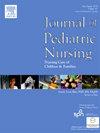儿科肿瘤化疗患者营养筛查工具的比较
IF 2.1
4区 医学
Q2 NURSING
Journal of Pediatric Nursing-Nursing Care of Children & Families
Pub Date : 2024-11-29
DOI:10.1016/j.pedn.2024.11.009
引用次数: 0
摘要
儿童肿瘤患者的营养不良是一个复杂的多因素过程,目前尚不清楚确定营养不良风险的最合适的筛查工具。本研究旨在比较一般儿科人群常用的营养状况和生长风险筛查工具(StrongKids)、儿科约克希尔营养不良评分(PYMS)、儿科营养不良评估筛查工具(STAMP)与儿童癌症营养筛查工具(SCAN)在确定营养不良风险方面的差异,SCAN专门针对儿童癌症进行了验证。方法本横断面研究纳入92名2-18岁的儿童,他们在血液肿瘤科接受化疗。使用SCAN、StrongKids、PYMS、STAMP来确定营养风险的流行程度,并进行人体测量评估。计算敏感性和特异性值,以及筛选工具之间的一致程度。结果69.6%的儿童存在营养风险。根据StrongKids、PYMS和STAMP的数据,儿童的高营养风险分别为43.5%、56.5%和64.1%。STAMP的敏感性为81.2%,高于StrongKids(60.9%)和PYMS(79.7%)。StrongKids、PYMS和STAMP的特异性分别为96.4%、96.4%和75.0%。SCAN和PYMS之间有实质性的一致。结论pyms对SCAN诊断的营养不良风险患者具有最佳的特异性和敏感性。实践意义除人体测量外,还应使用特定人群或高度敏感的营养筛查工具来确定营养不良的风险。本文章由计算机程序翻译,如有差异,请以英文原文为准。
Comparison of nutritional screening tools in pediatric oncology patients receiving chemotherapy treatment
Background
Malnutrition in pediatric oncology patients is a complex and multifactorial process, and the most appropriate screening tool to determine the risk of malnutrition is not clear. The study aimed to compare the Screening Tool for Risk on Nutritional Status and Growth (StrongKids), Pediatric Yorkhill Malnutrition Score (PYMS), Screening Tool for the Assessment of Malnutrition in Pediatrics (STAMP), which are commonly used in the general pediatric population, with the Nutrition Screening Tool for Childhood Cancer (SCAN), which was specifically validated for pediatric cancer, in determining the risk of malnutrition.
Methods
This cross-sectional study included 92 children aged 2–18 years who were admitted to the hematology-oncology unit and were receiving chemotherapy. The prevalence of nutritional risk was determined using the SCAN, StrongKids, PYMS, STAMP, and anthropometric assessments were performed. Sensitivity and specificity values, and the degree of agreement between screening tools were calculated.
Result
The SCAN identified nutritional risk in 69.6 % of the children. According to StrongKids, PYMS and STAMP, the high nutritional risk in children was 43.5 %, 56.5 % and 64.1 %, respectively. The sensitivity of STAMP (81.2 %) was higher than that of StrongKids (60.9 %) and PYMS (79.7 %). The specificity of StrongKids, PYMS and STAMP was 96.4 %, 96.4 %, and 75.0 %, respectively. There was substantial agreement between SCAN and PYMS.
Conclusion
PYMS has the best specificity and sensitivity in identifying patients at risk of malnutrition as determined by SCAN.
Implications for practice
In addition to anthropometric measurements, population-specific or highly sensitive nutritional screening tools should be used to determine the risk of malnutrition.
求助全文
通过发布文献求助,成功后即可免费获取论文全文。
去求助
来源期刊

Journal of Pediatric Nursing-Nursing Care of Children & Families
NURSING-PEDIATRICS
CiteScore
3.70
自引率
8.30%
发文量
291
审稿时长
65 days
期刊介绍:
Official Journal of the Society of Pediatric Nurses and the Pediatric Endocrinology Nursing Society (PENS)
The Journal of Pediatric Nursing: Nursing Care of Children and Families (JPN) is interested in publishing evidence-based practice, quality improvement, theory, and research papers on a variety of topics from US and international authors. JPN is the official journal of the Society of Pediatric Nurses and the Pediatric Endocrinology Nursing Society. Cecily L. Betz, PhD, RN, FAAN is the Founder and Editor in Chief.
Journal content covers the life span from birth to adolescence. Submissions should be pertinent to the nursing care needs of healthy and ill infants, children, and adolescents, addressing their biopsychosocial needs. JPN also features the following regular columns for which authors may submit brief papers: Hot Topics and Technology.
 求助内容:
求助内容: 应助结果提醒方式:
应助结果提醒方式:


